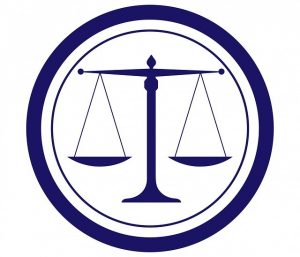The death by apparent suicide on August 10, 2019, of sex trafficker Jeffrey Epstein has again raised the issue about how victims achieve justice when the accused perpetrator kills him- or herself while in prison. Epstein may potentially have more victims than most serial killers: dozens (?) of women whom he trafficked for sex, assaulted and even raped when they were girls; the girls who may not have been directly affected by him but rather by the others in his circle; and the families of those girls/women. Epstein’s death may be the most hurtful to those injured by the “possibly illegal non-prosecution agreement struck between his lawyers and prosecutors” in the early 2000s that “allowed Epstein to continue his lifestyle — and allegedly his abuse — for another ten years.”
When an alleged criminal or wrongdoer takes “the easy (or cowardly) way out” and kills himself before he stands trial, victims and their families lament that they do not get their day in court.  In the words of one victim/survivor of Epstein, Jennifer Araoz, who has accused Epstein of raping her when she was 15, “We have to live with the scars of his actions for the rest of our lives, while he will never face the consequences of the crimes he committed, the pain and trauma he caused so many people.”
In the words of one victim/survivor of Epstein, Jennifer Araoz, who has accused Epstein of raping her when she was 15, “We have to live with the scars of his actions for the rest of our lives, while he will never face the consequences of the crimes he committed, the pain and trauma he caused so many people.”
These reactions of betrayal, unfairness and defeat are entirely understandable. In American jurisprudence, no matter how strong the evidence might be against the perpetrator, his/her case is dismissed if s/he dies before the trial. (The reason being that there is no future misconduct to prevent or individual punishment to inflict.) A case can also be vacated if the perpetrator dies before sentencing. One particularly egregious example of this is that of former NFL star, the late Aaron Hernandez; he was convicted of the 2013 murder of his friend Odin Lloyd and committed suicide after being acquitted of the murders of Daniel de Abreu and Safiro Furtado. Hernandez’ “conviction for Lloyd’s murder was initially vacated under the doctrine of abatement ab initio because Hernandez died during its appeal, but was reinstated in 2019 following an appeal from prosecutors and the Lloyd family.” The mother of Odin Lloyd settled the wrongful-death civil case against Hernandez with his estate.
Some of the good news in the case of Epstein is that civil cases are going forward, which could lead to monetary awards for the victims from his vast estate.  Victims are also pursuing criminal cases against Epstein’s co-conspirators/co-defendants, and they are already getting some measure of justice in the court of public opinion.
Victims are also pursuing criminal cases against Epstein’s co-conspirators/co-defendants, and they are already getting some measure of justice in the court of public opinion.
There is another way to look at justice in the case of evil people who take their own lives instead of “facing the music” at trial or before sentencing. This alternative perspective may enable victims to have some comfort and resolution and to move on with confidence that there will ultimately be justice.
The view that suicide helps the evildoer escape the consequences of his/her actions stems in large part from the widespread belief in our culture that this life is the only one we have, that when we die, we cease to exist. In this scenario, the evil perpetrator thus no longer feels anything – pain, punishment, remorse, etc. Another fairly common view, especially in past ages, is that an evil person will burn in hell for his misdeeds. While there may be a measure of comfort in this for some believers, there is little evidence that this actually happens – it is more a belief than a factual outcome. Also, the victims obviously do not witness the perpetrator’s burning and suffering (!), nor do the victims witness the perpetrator hearing the accusations against him/her during the trial, and the perpetrator does not spend years languishing in jail.
It is paranormal evidence to which we can turn for an alternative view of the afterlife and the likely results to the souls of those who commit suicide, including those who have grievously harmed others. In a word, killing oneself solves nothing; as we have seen in most of our posts in the Future category, there is no “death” – we do “live” on the other side. In fact, most of us live many lives on earth – through reincarnation; this is due in part to the need to grow and mature spiritually. And, due to the law of cause and effect, or karma, part of the spiritual growth we undergo is accountability for the wrongs we have done.  The evidence shows that, while most good people and the victims of evildoers reside in a beautiful place and are at peace, there is another “place” where evil spirits exist after physical death.
The evidence shows that, while most good people and the victims of evildoers reside in a beautiful place and are at peace, there is another “place” where evil spirits exist after physical death.
The evidence of which we speak comes from several sources that we can examine here: the postmortem testimonies of Sir Arthur Conan Doyle; the detailed readings of reputable psychics and mediums; and the experiences of those who travel out-of-body. (Additional evidence includes spirit circles and electronic voice phenomena, for instance; see Abrahamsen, Paranormal, for examples.)
First, let us look at what souls experience when they take their own lives.
- Psychic and energy worker Michelle Belanger recounts an explicit, graphic encounter with the very angry spirit of a woman who, unknown to Belanger until later, had just killed herself in a hotel room. The spirit was that of a middle-aged woman, with a sense of weariness, and she was asking angrily, “Why? Why am I still here?” The woman, who interacted psychically with Belanger for hours, was beginning to realize that nothing had been resolved by taking her own life. (Haunting Experiences, 205-14)
- Author Anne Puryear recounts the tremendous sorrow and desperation her 15-year-old son Stephen experienced on the other side after he hanged himself. Realizing almost immediately that he had done the wrong thing, he tried desperately to get back into his physical body. He was eventually helped by a “sweet lady,” an angelic being, who informed him that he would have to stay with her. The spirits assisted him in moving on and dictating the book to his mother, through trances and automatic writing, in order to help others avoid making the same mistake he had made. (Stephen Lives!, 184-91 and passim)
Now let us see what the evidence says about where souls go who have done evil and harmed others.
- Postmortem Doyle transmitted the following in séances with a medium through automatic writing: “[W]hat of those [places] of a slower, of a lower vibration; perhaps even lower than this earth? These are not pleasant places, for they are peopled by humans whose lives have attuned them to such planes.
 They are grey, misty, dark-November-fog places, good to get out of. That is why they exist; to spur their folk to get away, by their own spiritual efforts.” (Book of the Beyond, 110) “He who has lived a life gross, material, sensual, or selfish, finds himself in ‘queer street’ [in trouble]. . . . He passes onward, through the underworlds. Every step towards salvation must be earned”… (Book of the Beyond, 163) “The lowest astral plane consists of a land of desire, burning and persistent desire, the which the man [sic] has fostered during his life on earth. Those who migrate thither are such as hold neither affection nor love for any creature save self. . . . In the greyness are seen stunted trees and vegetation, while forms of [human beings] live and dwell in mists damp and thick, being themselves clothed in grey; being in fact so wrapped up in themselves, in self-centredness as to create about themselves environments unpleasantly cold and repellent.” (Book of the Beyond, 165)
They are grey, misty, dark-November-fog places, good to get out of. That is why they exist; to spur their folk to get away, by their own spiritual efforts.” (Book of the Beyond, 110) “He who has lived a life gross, material, sensual, or selfish, finds himself in ‘queer street’ [in trouble]. . . . He passes onward, through the underworlds. Every step towards salvation must be earned”… (Book of the Beyond, 163) “The lowest astral plane consists of a land of desire, burning and persistent desire, the which the man [sic] has fostered during his life on earth. Those who migrate thither are such as hold neither affection nor love for any creature save self. . . . In the greyness are seen stunted trees and vegetation, while forms of [human beings] live and dwell in mists damp and thick, being themselves clothed in grey; being in fact so wrapped up in themselves, in self-centredness as to create about themselves environments unpleasantly cold and repellent.” (Book of the Beyond, 165) - Renowned medium James Van Praagh has learned through his spirit guides that “the ‘problems’ that cause this act [of suicide] are still very much a part of its mental and emotional mindset.” (Reaching to Heaven, 38-39) Van Praagh’s guides describe the lower places where evil souls go: “This lower region vibrates at a much slower rate than the upper regions. Here the light is dim and fades almost to a faint darkness. . . A pungent and unpleasant odor pervades it. . . ¶ Spirits in such a dark realm harbor mental attitudes of hate, malice, and the need for control over others” and include “murderers, rapists, thieves, swindlers, cheaters, assassins, or anyone who has harmed another human being. . . A soul remains in this darkened hole until all of its lowest desires are lived out.” (Reaching to Heaven, 60-61)
- Virginia businessman Robert Monroe, an expert on out-of-body experiences, reports on the nature of the “gray areas” of the afterlife, similarly reported by Doyle. According to Monroe, “There are, however, more positive prospects to report regarding heaven and hell. If they exist, they are somewhere in Locale II. ¶ In non-physical trips to Locale II, often there is a ‘layer’ or area which one must pass through. . . It seems to be the part of Locale II closest to Here-Now, and in some way most related. It is a gray-black hungry ocean where the slightest motion attracts nibbling and tormenting beings.” (Journeys, 120) “It is easy to conclude that a momentary penetration of this nearby layer would bring ‘demons’ and ‘devils’ to mind as the chief inhabitants. They seem subhuman, yet have an evident ability to act and think independently. . . ¶ In these worlds where thoughts are not only things, but are everything, including you, your poison or perfection is of your own making. If you are a remorseless killer, you may end up in that part of Locale II where all are of the same design. This truly would be hell for such people, for there would be no innocent, defenseless victims. ¶ Project this outward, and you can begin to perceive the myriad variations. Your destination in the heaven or hell of Locale II seems to be grounded completely within the framework of your deepest constant (and perhaps non-conscious) motivations, emotions, and personality drives. The most consistent and strongest of these act as your ‘homing’ device when you enter this realm.” (Journeys, 121, italics in original)
What becomes abundantly clear from this paranormal evidence, and more, is that we possess freewill to do good or evil; in our earthly lives, we constantly make these choices, and the perpetrators of the crimes and horrors about which we have been speaking have made those choices through their own freewill. At the same time, we are also predestined for union with God, as Doyle discovered: “Whilst that soul has been given a degree of freewill choice whereby to accept or reject good or evil, so also it can never break its link with the great Soul, God. To God there is always an upward pull. . . . ¶ The magnetic force of the divine intelligence must ever hold him on the path of eternal progression. . . Thus no man can escape his destiny, which is ultimate perfection, ultimate return to the God of his creation.” (Book of the Beyond, 196-97)
 The evidence shows, in the end, that there is justice in the universe. If an evil person, a criminal, a wrongdoer decides to take his or her own life, s/he does not escape the consequences. We may be extremely frustrated at the “unfinished” aspect of this situation – and that is understandable – but we can also feel assured that justice will ultimately be served. As we have mentioned before with regard to the challenges we face in our lives, one of our main missions is self-love and self-care. Acknowledging the truth of the law of cause and effect, and the steps we can take in the criminal or civil justice systems and in the court of public opinion, can help us in our vital healing process.
The evidence shows, in the end, that there is justice in the universe. If an evil person, a criminal, a wrongdoer decides to take his or her own life, s/he does not escape the consequences. We may be extremely frustrated at the “unfinished” aspect of this situation – and that is understandable – but we can also feel assured that justice will ultimately be served. As we have mentioned before with regard to the challenges we face in our lives, one of our main missions is self-love and self-care. Acknowledging the truth of the law of cause and effect, and the steps we can take in the criminal or civil justice systems and in the court of public opinion, can help us in our vital healing process.
Resources
Abrahamsen, Valerie A. Paranormal: A New Testament Scholar Looks at the Afterlife. Self-published 2015; printed by Shires Press, Manchester Center, VT.
Belanger, Michelle. Haunting Experiences: Encounters with the Otherworldly. Woodbury, Minnesota: Llewellyn Publications, 2009.
Cooke, Ivan. Arthur Conan Doyle’s Book of the Beyond. New Lands, England: The White Eagle Publishing Trust, 2006.
Monroe, Robert A. Journeys Out of the Body. Garden City, NY: Anchor Books, 1973.
Puryear, Anne. Stephen Lives! My Son Stephen: His Life, Suicide, and Afterlife. New York: Pocket Books, a division of Simon & Schuster Inc., 1992, 1996.
Van Praagh, James. Reaching to Heaven: A Spiritual Journey Through Life and Death. New York: Penguin Books, 1999.
